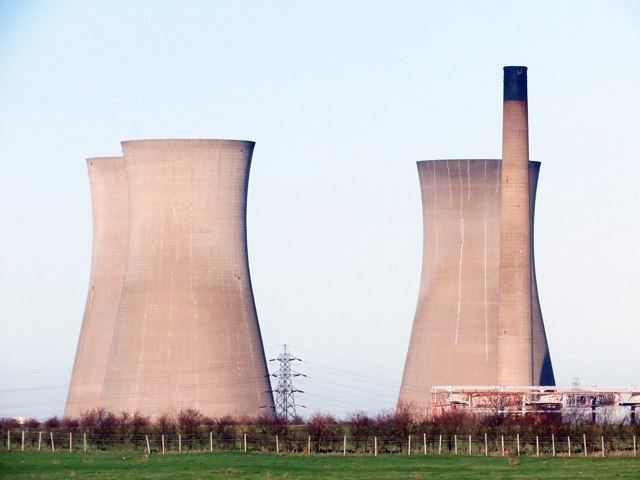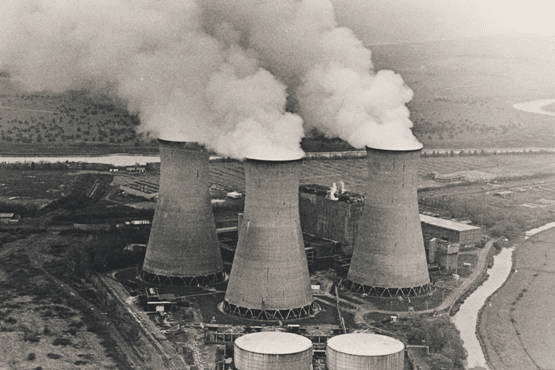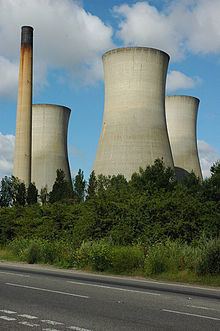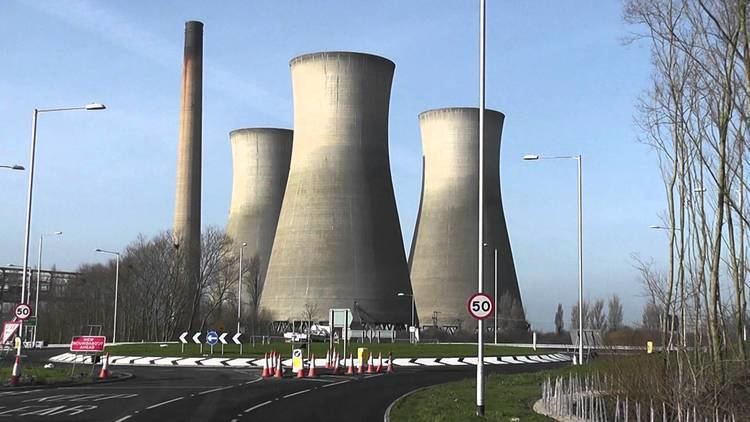Opened 1962 | ||
 | ||
Similar Pegwell Bay, Medway Power Station, Damhead Creek power sta, Shoreham Power Station, Marchwood Power Station | ||
Official richborough power station demolition
Richborough power station was a power station close to the mouth of the River Stour near Sandwich, on the east coast of Kent. It operated from 1962 to 1996; the towers were demolished in 2012. It was built on land within the Port of Richborough but being on the northern edge its site lies mostly within the neighbouring parish of Minster, Kent. BFL Management Ltd, the current owners of the site plan to bring it back into use as the £750 million Richborough Energy Park.
Contents
- Official richborough power station demolition
- Richborough power station remembered
- HistoryEdit
- DemolitionEdit
- FutureEdit
- In popular cultureEdit
- References

Richborough power station remembered
HistoryEdit

The Central Electricity Generating Board started construction of the power station in 1958, with Unit 1 coming online in December 1963, and Unit 2 following in August 1963. It opened as a 342MW coal-fired station, using coal from Kent and other coalfields.

It was converted to burn oil in summer 1971 and further converted in 1989 to burn a proprietary oil and water emulsion called Orimulsion, imported from Venezuela through Port Richborough.

The site was also chosen as the site for an experimental 1MW wind turbine, which was at that time the largest ever installed in the UK, with permission given in 1987, and the turbine becoming live in 1989.

After growing concerns over the environmental effects of the Orimulsion fuel in the main power station, court action was taken in two separate actions, with both cases settled out of court. the 360MW station ceased generating in 1996.
DemolitionEdit
Following the plant closure, the majority of the equipment was removed during a strip out programme, which also saw the demolition of a number of the buildings, leaving only a few outbuildings, the office block and the landmark cooling towers and chimney standing.
In controlled blasts, the three 97m cooling towers and a single 127m chimney stack were demolished on 11 March 2012. Some locals had campaigned to keep the towers, saying they formed part of the historical landscape and were used as a navigation point by boats wanting to enter the mouth of the river stour known to have a narrow channel of useful depth.
FutureEdit
The current owner of the site, BFL Management Ltd, plan to bring the site back into use as a £750 million green energy park. The national grid interconnector from the original power station is still in place, and is now the grid link for the offshore Thanet Wind Farm.
There are additional plans to create additional recycling and green energy facilities on site, including an anaerobic digester, a waste processing plant, a biomass combined heat and power generator, a pyrolysis plant and a peak demand 30MW diesel generator. When fully operational, the park could provide up to 1,400MW of power, employing 100 full-time equivalent, with up to 500 jobs in the construction phase. National Grid plans to use part of the site for a new interconnector with Belgium. A 1000MW High Voltage Direct Current (HVDC) 130 km undersea link with the Belgium transmission operator, Elia, would allow power to flow in both directions. This would be the third link from the UK National Grid to Europe, the others being the Britned 1000MW link to the Neitherlands commissioned in 2011 and the IFA 2000MW link to France commissioned in 1986. The link should be in operation in 2018.
In popular cultureEdit
The power station can be seen in several scenes of the 2008 film Son of Rambow, and was the location for the 2003 Channel 4 television series Full Metal Challenge. More recently a brief clip of the demolition of the cooling towers was used by Alter Bridge in their official music video for 'Addicted to Pain' off their 2013 album Fortress.
